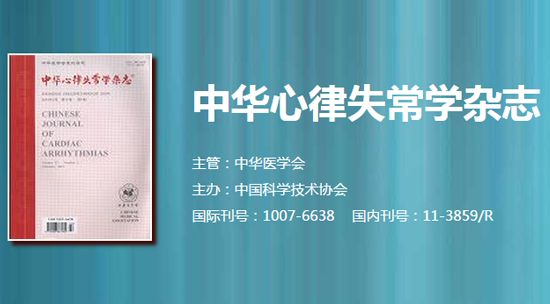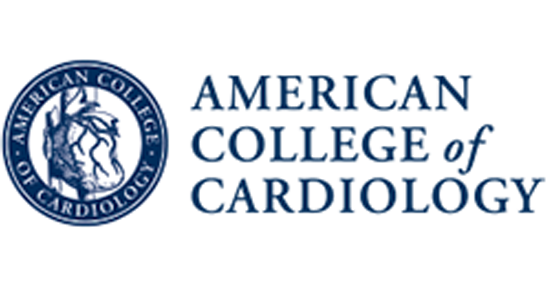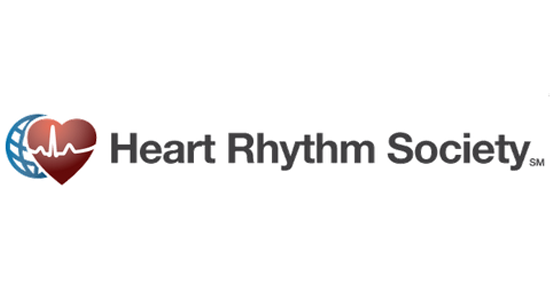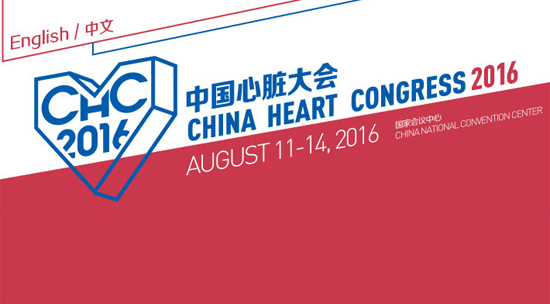HeartRhythm主编—陈鹏生教授语音速递(十一月刊 英文版)
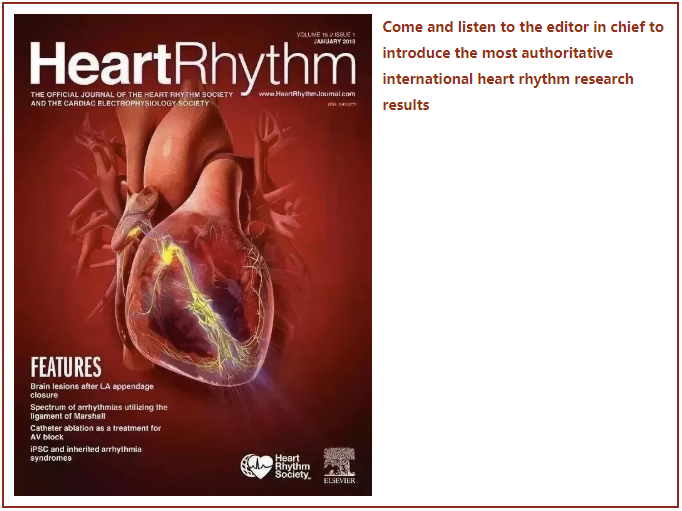

Peng-Sheng Chen
Hello, this is Dr. Peng-Sheng Chen, the Editor-in-Chief of Heart Rhythm.
The first paper in November 2022 issue is “Renal denervation prevents subclinical atrial fibrillation in patients with hypertensive heart disease: randomized, sham-controlled trial”. This is a single-center, randomized, sham-controlled pilot trial, including patients in sinus rhythm, but with a high risk of developing subclinical AF. Eighty patients were randomly assigned to renal denervation or sham groups. After 24 months of follow-up, subclinical atrial fibrillation occurred in 8 renal denervation patients (19%) and 15 sham patients (39.5%). The authors conclude that renal denervation reduced incident subclinical AF events with hypertensive heart diseases. The observed effects may occur independent of BP lowering.
The second article is “Galectin-3 is an independent predictor of postoperative atrial fibrillation and survival after elective cardiac surgery”. Four hundred seventy-five consecutive patients undergoing elective heart surgery were included in this prospective singlecenter cohort study. Galectin-3 plasma levels were assessed on the day before surgery. The 200 patients (42.1%) who developed postoperative AF had significantly higher galectin-3 levels. During a median follow-up of 4.3 years, 72 patients (15.2%) died. Galectin-3 predicted all-cause mortality in multivariable Cox regression analysis. The authors conclude that the profibrotic biomarker galectin-3 is an independent predictor of postoperative AF and mortality after cardiac surgery. This finding highlights the role of the underlying arrhythmogenic substrate in the genesis of postoperative AF.
The next paper is “Machine learning for distinguishing right from left premature ventricular contractions origin using surface electrocardiogram features”. A total of 759 patients undergoing radiofrequency ablation of premature ventricular beats were enrolled into the development (n = 605), external validation (n = 104), or prospective cohort (n = 50). Machine learning algorithms were used to construct predictive models for the origin of PVCs using body surface electrocardiogram features. The authors found that Random Forest algorithm has improved the accuracy of distinguishing the origin of PVCs, which surpasses 4 previous standards, and would be used to identify the origin of PVCs before the interventional procedure.
Up next is “Confirmation of the achievement of linear lesions using "activation vectors" based on omnipolar technology”. The purpose of this study was to examine the reliability and versatility of a method using "activation vectors" based on omnipolar technology to confirm the block line. Linear ablation was performed during pacing, with the HD Grid catheter placed beside the linear lesion opposite the pacing site. The endpoint of complete linear lesion was complete inversion of the activation vectors to the opposite direction. In 33 patients, 24 cavotricuspid isthmus lines, 11 mitral isthmus lines, 16 posterior lines, and 2 intercaval lines were performed using this method. The authors found that this method can diagnose achievement of complete block line with 100% accuracy, whereas conventional differential pacing misdiagnosed incomplete block with epicardial conduction in posterior lines in 3 cases and in mitral isthmus lines in 2 cases. The authors conclude that confirmation of complete linear lesions using "activation vectors" based on omnipolar technology is a reliable and versatile method.
That paper is followed by a review article titled “Cardioneuroablation for vasovagal syncope: A systematic review and meta-analysis”. The purpose of this study was to provide a freedom from syncope estimate for cardioneuroablation. A total of 465 patients were included across 14 studies. The freedom from syncope was 91.9%. Cardioneuroablation limited to right atrial ablation was associated with a significant lower freedom from syncope vs left atrial ablation only and biatrial ablation. This meta-analysis suggests a high freedom from syncope after cardioneuroablation in vasovagal syncope.
Up next is “Cerebral safety after pulsed field ablation for paroxysmal atrial fibrillation”. National Institutes of Health Stroke Scale (NIHSS) scores were assessed before and 2 days and 30 days after PVI for AF. One day after PVI, patients underwent cerebral MRI scanning to document the occurrence of silent cerebral lesions and/or events. Pulsed field ablation (PFA) was performed in 30 patients. No patient showed neurological deficits. All NIHSS scores showed the minimum value of 0. Cerebral MRI scans were normal in 29 of 30 patients (97%). In 1 patient (3%), a single 7-mm cerebellar lesion was observed. Forty days after the procedure, follow-up cerebral MRI scan showed complete regression of the lesion. The authors conclude that in patients treated with PFA for symptomatic paroxysmal AF, the incidence of MRI-detected asymptomatic thromboembolic cerebral events or lesions was as low as 3%. No neurological deficits occurred in any of the patients.
Next up is “Thirty-day readmission rate of same-day discharge protocol following left atrial appendage occlusion: a propensity score-matched analysis from National Readmission Database”. A retrospective cohort study of left atrial appendage closure procedures performed in the United States from 2015 to 2019 was conducted using the US Nationwide Readmission Database. Of 48,953 patients, 972 patients (1.99%) were discharged on the same day after left atrial appendage closure and the remaining 47,981 patients stayed at least 1 night. A propensity score-matched analysis generated 961 matched pairs in each group. The 30-day readmission rate after discharge was similar between the groups. The total required health care cost was significantly lower in the same day discharge group. GI bleeding was the major cause for readmission, but stroke and pericardial effusion were rare. The authors conclude that in patients without procedure-related complications, same day discharge is a safe and cost-effective protocol.
The next article is “Life threatening cardiac arrhythmia and sudden death during electronic gaming: An international case series and systematic review”. A multisite international case series of suspected or proven cardiac arrhythmia during electronic gaming in children and a systematic review of the literature were performed. Twenty-two patients were identified as having experienced suspected or proven ventricular arrhythmia during electronic gaming; 6 (27%) had experienced cardiac arrest, and 4 (18%) died suddenly. A proarrhythmic cardiac diagnosis was known in 7 (31%) patients before their gaming event and was established afterward in 12 (54%). The authors conclude that electronic gaming can precipitate lethal cardiac arrhythmias in susceptible children. The incidence appears to be low, but syncope in this setting should be investigated thoroughly. In children with proarrhythmic cardiac conditions, electronic war games in particular are potent arrhythmic trigger.
Coming up is “Diagnostic utility of early premature ventricular complexes in differentiating atrioventricular reentrant and atrioventricular nodal reentrant tachycardias”. His-refractory PVCs perturbing a SVT establish the presence of an accessory pathway (AP). Earlier PVCs may perturb SVTs but are considered nondiagnostic. Sixty-five consecutive patients with SVT were retrospectively evaluated. Early PVCs were defined when the ventricular pacing stimulus was >35 ms ahead of the His during tachycardia. There were 43 AVNRT and 22 AVRT cases. Fourteen AVRT cases had an accessary pathway response while no AVNRT cases had an accessary pathway response. The specificity of an accessary pathway response to early PVC in predicting AVRT was 100%. The authors conclude that an accessory pathway response to PVCs with A1A2 ≤ H1S2+35 ms is 100% specific for the presence of an accessary pathway.
Up next is “Dual atrioventricular nodal non-reentrant tachycardia: Various atrioventricular conduction responses to atrioventricular simultaneous pacing”. Five patients diagnosed as having dual AV nodal non-reentrant tachycardia were retrospectively investigated. Atrial pacing could not induce the clinical tachycardia as continuous double firing in any of the 5 patients. The pacing method of AV simultaneous basic pacing preceding atrial programmed extrastimulation did not allow interruptions of double firing during the basic drive trains and induced the double ventricular response phenomenon within the limited range of the extrastimulus intervals in all 5 patients. The double ventricular response phenomenon within the limited range of the extrastimulus intervals may be based on the existence of the dual AV nodal pathway with concealed retrograde penetration. The authors conclude that the AV simultaneous basic pacing preceding atrial programmed extrastimulation method consistently and reproducibly unmasked the existence of the dual AV nodal pathway as the double ventricular response phenomenon in patients with dual AV nodal non-reentrant tachycardia.
The next paper is “Long-term outcome of repaired tetralogy of Fallot: Survival, tachyarrhythmia, and impact of pulmonary valve replacement”. A retrospective study of 1744 tetralogy of Fallot patients who survived total repair from 1970 to 2020 was conducted. Annual risks of tachyarrhythmia/sudden cardiac arrest increased to 0.295% and 1.338% in patients aged 10-30 and 30-60 years, respectively, without sex predominance. Tachyarrhythmia risk was higher in PV repair (PVR) patients than in No PV repair patients. The risk was reduced in PVR patients without tachyarrhythmia before PVR. However, survival in patients with ventricular tachyarrhythmia/SCA still was better after PVR. The authors conclude that tachyarrhythmia and sudden cardiac arrest occurrence and the need for PVR increased with age during young adulthood. PVR reduced subsequent arrhythmias only in those patients without arrhythmias before PVR.
Up next is “Testosterone does not shorten action potential duration in Langendorff perfused rabbit ventricles”. The authors performed optical mapping studies in rabbit hearts with or without testosterone administration. Acute studies included 26 hearts. For chronic studies, the authors implanted testosterone pellets subcutaneously in 7 female rabbits for 2-3 weeks before optical mapping studies during complete AV block. Six rabbits without pellet implantation served as controls. The optical mapping studies and QT interval measurements showed no APD or QT shortening in either group of rabbit hearts. In chronically treated rabbits, the ventricular APD80 in the pellet group was longer than in the control group at 300- to 700-ms pacing cycle lengths. The authors conclude that testosterone does not shorten ventricular repolarization in rabbit hearts. The sex differences in QT intervals cannot be explained solely by the differences of testosterone concentrations.
Coming up is “The genetic basis of sudden unexplained death after COVID-19 vaccination in Thailand”. The authors aimed to study the genetic basis of sudden unexpected death (SUD) after COVID-19 vaccination in Thailand. From April to December 2021, 13 cases with natural but unexplained death within 7 days of COVID-19 vaccination were enrolled for whole exome sequencing. Among them, 10 (77%) were men, 12 were Thai; and 1 was Australian. Fever was self-reported in 3 cases. Whole exome sequencing analysis revealed that 5 cases harbored SCN5A variants that had previously been identified in patients with Brugada syndrome, giving an SCN5A variant frequency of 38% (5 of 13). These findings suggest that SCN5A variants may be associated with SUD within 7 days of COVID-19 vaccination, regardless of vaccine type, number of vaccine dose, and presence of underlying diseases or postvaccine fever.
These original articles are followed by two contemporary reviews. The first one is titled“Postural orthostatic tachycardia syndrome as a sequela of COVID-19”. This review evaluates the current literature available on the associations between COVID-19 and POTS, possible mechanisms, patient assessment, treatments, and future directions to improving our understanding of post-COVID-19 POTS. A second review is titled “Incidence, management and clinical impact of tachyarrhythmic events following transcatheter aortic valve replacement”. TAVR has been shown to reduce the arrhythmic burden, but a significant proportion of patients (16%) present with complex premature ventricular complex arrhythmias within the year after TAVR. Whether these events are related to poorer outcomes is unknown.
There is a Hands-on article titled “Performing transcatheter left atrial appendage closure: Techniques and challenges”.
This issue of the journal also features two Research Letters. The first one is “Anticoagulation management and risk of thromboembolism in healthy youth with atrial fibrillation: Data from a Multi-Institutional PACES Collaborative Registry”. The authors conclude that AFassociated thrombosis is rare in children and young adults, and their data show the large practice variation in anti-coagulation management. A second one is titled “Smartwatch failure to record a single-lead electrocardiogram after conduction system pacing: A case series”.The authors reported a case series with 5 patients, and described the mechanisms of failure.
I hope you enjoyed this podcast. For Heart Rhythm, I’m the Editor-In-Chief, Dr. Peng-Sheng Chen.
